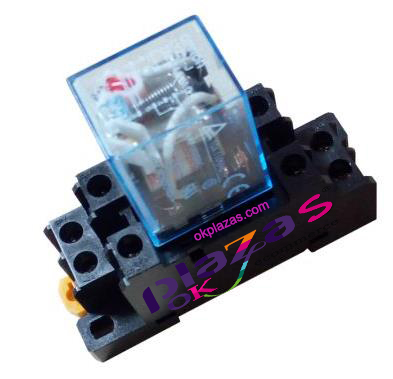The main function of the relay coil
The main function of the relay coil
What is the main function of the relay coil? We should all be aware of the role of the relay. As long as a certain voltage is applied to both ends of the coil, a certain current will flow in the coil, which will produce electromagnetic effects. The armature will overcome the pull of the return spring under the action of electromagnetic force. To the iron core, which drives the moving contact of the armature and the static contact (normally open contact) to attract and close. The function of the coil is to make the upper coil charged by the input voltage to adsorb or bounce the related contact points to realize the function of mechanically opening/breaking another set of circuits, thereby achieving the desired output. Therefore, the coil is the main component of the relay. To convert electrical energy into mechanical energy to achieve control.
A relay is a device often used as a switch in a circuit. According to the type of control voltage required by its coil, it can be divided into AC relay and DC relay. The specifications of the relay are expressed in terms of coil control voltage and contact current. Usually, when the load current is less than 10A, the contact of the relay can be directly used to make or break the circuit. If the load current is too large, it can be used as an indirect control device.

In central air conditioning control systems, relays are often used as switches for power circuits such as compressors, fan motors, water pumps, and four-way valves. When in use, one end of the relay control coil is connected to the power supply, and the other end is connected to the output end of the control component. Through the output control signal of the control component, the two ends of the relay control coil generate a potential difference and form a current loop to generate electromagnetic force. Under the action of electromagnetic force and the inherent elastic force of the relay reed, the relay contacts are pulled in or released, thereby connecting or disconnecting the circuit of the electrical load power supply to control the operation or stop of the related equipment.
The main function of the relay coil: the use of electromagnetic principles to realize the conversion of electrical energy into mechanical energy to achieve control. The coil and the armature inserted in the coil form an electromagnet. The magnetic force generated by the coil will make the armature move mechanically and drive the contacts to complete the connection. Turn on or off the circuit to achieve the desired output, so the coil is the main component of the relay. Because the current through the coil is very small, and the current or voltage controlled by the contact is higher. So as to realize the use of small current or small voltage The purpose of controlling high current and high voltage.

When the relay coil is de-energized, the electromagnetic attraction force will disappear, and the armature will return to its original position under the reaction force of the spring, so that the moving contact and the original static contact (normally closed contact) are attracted. This pulls in and releases, so as to achieve the purpose of conducting and cutting off in the circuit. The "normally open and normally closed" contacts of the relay can be distinguished as follows: the static contact that is in the off state when the relay coil is not energized is called "normally open contact"; the static contact that is in the on state is called It is "normally closed contact".
We all understand the functions of relays and coils. Simply put, the relay coil is an important part of the relay. The adsorption and bounce of the relay require a coil. If the relay is to be effective, it must be used in conjunction with the coil.





